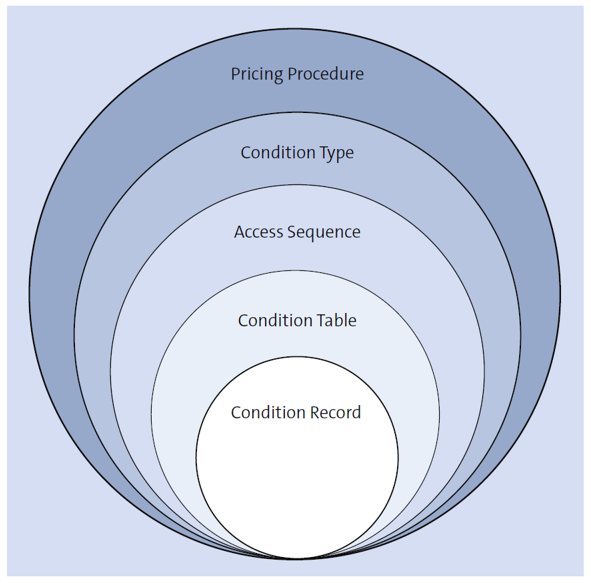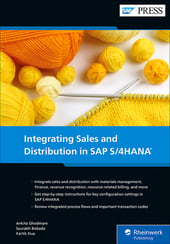The condition technique is the most widely used and adaptable methodology used by SAP to assist consultants in configuring complex business rules.
These rules are related to pricing determination, output determination, text determination, revenue account determination, and so on. This is widely used in sales and distribution, materials management, and controlling. In materials management, its used for determining the pricing schema, that is, the pricing procedure from the materials management side.
The condition technique describes how the system determines prices based on information stored in condition records. you set up and control the various elements used in the condition technique with Customizing in sales and distribution. The condition technique is used by the system during sales order processing to determine a variety of important pricing information. For example, given the conditions, the system automatically determines which gross price the customer should be charged and which discounts and surcharges are applicable.
As shown in the figure below, it consists of the following major components.
Field Catalog
The field catalog contains every possible set of fields that can be used to determine business rules. If the associated field isn’t present in the field catalog, then you can append the pricing structure with the help of an ABAP consultant and include the desired fields in the field catalog.
Condition Table
A condition table is a database table that is created as part of the customization process from a small subset of the field catalog.
Access Sequence
An access sequence is a search strategy used by the system to locate valid data for a specific condition type. The order of the accesses determines which condition records take precedence over others. The accesses instruct the system on where to look first, second, and so on, until a valid condition record is found. The condition tables that you’ll create in the previous step needs to be assigned in the access sequence of most specific to most general.
Condition Type
Each condition type represents one of the condition technique’s logical components. Excise tax, for example, could be one of the logical components of pricing and could be represented by one condition type or a combination of multiple condition types. The access sequence created earlier needs to be assigned in the condition type.
Pricing Procedure
A pricing procedure is a combination of multiple condition types. The condition type that you configured in the previous step needs to be assigned in the pricing procedure with the sequential order. Finally, the pricing procedure is assigned to the final document type that the business rule affects. In some cases, the determination happens at the document type level, that is, in revenue account determination, output determination, and cash account determination. You must assign the procedure to the document type. In sales pricing, you have to set up the determination of pricing procedure based on the sales area, document pricing procedure, and customer pricing procedure.

Editor’s note: This post has been adapted from a section of the book Integrating Sales and Distribution in SAP S/4HANA by Ankita Ghodmare, Saurabh Bobade, and Kartik Dua.



Comments